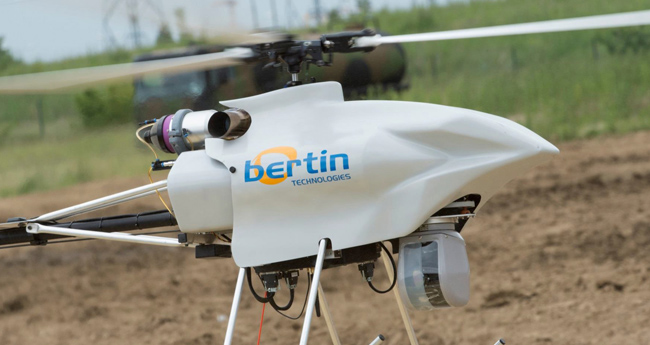High demand will enable market to almost double in size in less than 10 years; Unmanned Combat Air Vehicles (UCAVs) have potential to replace many aircraft roles
The global defence and security market for Unmanned Aerial Vehicles (UAVs), also referred to as ‘drones’, will expand at 5.5 percent per year over this decade, from the current figure of $6.4 billion, to $10.4 billion by 2024, according to new analysis released today by IHS Inc. (NYSE: IHS), the leading global source of critical information and insight.
“Unmanned systems are here to stay,” said Derrick Maple, principal analyst, unmanned systems for IHS Jane’s. “These systems are well established, combat proven and are an essential and expanding element of future operations across the globe.”
US to reclaim top exporter spot from Israel
In 2014, Israel again secured its position as the top exporter of UAVs. However, this year and into the foreseeable future, the US is forecast to regain a significant leading position through sales of General Atomics Predator series and Northrop Grumman Global Hawk.
Indigenous UAV industry on the rise
Western Europe, forecast to reach $1.3 billion in sales by 2024, continues to grow its capability, with the aim of building a strong indigenous UAV industry and to lessen its reliance on US and Israeli imports.
However, China, the Russian Federation, India, South Korea and Japan are increasing their investments Sales for these nations together are forecast to reach $3.4 billion by 2024. This sets the scene for a future vibrant global marketplace.
New technology advances crucial for success
Demand for new technology and capability enhancement has driven the exponential growth of the market.
“UAVs have proven their utility over the last decade or so, most notably in Afghanistan,” said Huw Williams, unmanned systems editor for IHS Jane’s International Defence Review. “Operators are now moving to expand their mission sets beyond visual surveillance and reconnaissance, and are introducing sophisticated intelligence and electronic warfare systems, as well as a wider range of munitions.”
“As technology matures, we are set to see Unmanned Combat Air Vehicles (UCAVs) come in to service,” Williams said. “These will feature ‘stealthy’ characteristics and advanced payloads and weaponry. They will operate alongside manned aircraft and eventually even replace them in many roles.”
Manned and unmanned operations crucial
“There is a growing need for integrated and networked manned and unmanned operations,” Maple said. “Anti-Access Area Denial (A2AD) environments will likely become more prevalent as will the systems’ need to address these.”
Countermeasure technologies are progressing and there are demands for robust communications capability and the need to push forward sense and avoid systems.
Increased levels of augmented intelligence provide the capability for UAVs to react better to unplanned events. Longer-term plans include the potential for using swarms of small unmanned aircraft to attack and jam enemy defences.
Data
Exports: Israel was the top exporter in 2014, closely followed by the US. These two countries shared 71 percent of all UAV exports.
In 2015, the US will swing back to number one exporter with some 57 percent of the total and over the next five years is forecast to grow exports to account for over two thirds of the total. Israel will retain the number two position, whilst export market shares for Italy, France, Germany and the UK are under pressure, with Turkey, Sweden and South Africa increasing.
Imports: NATO procurement has lead imports in 2014 and 2015, and together with other sales to Western European countries accounts for over 60 percent of total imports. These nations will continue to be a leading and major element of imports over the next five years.


